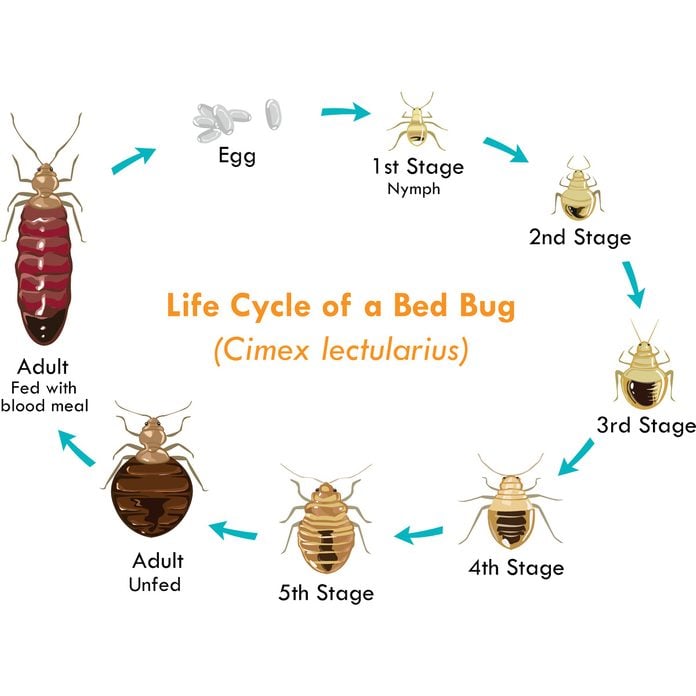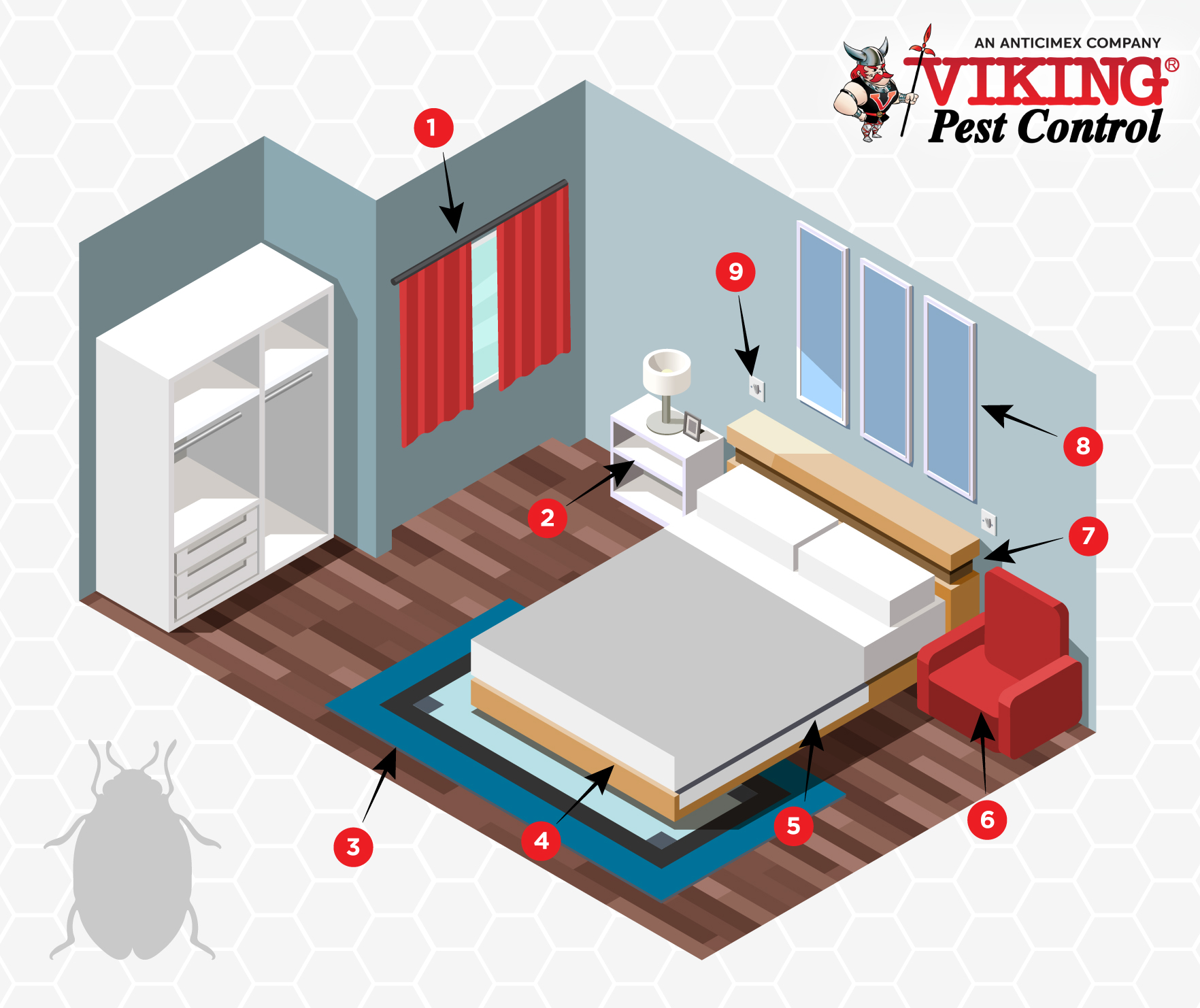The Ultimate Bed Bug Treatment Handbook: Whatever You Required to Be successful
The Ultimate Bed Bug Treatment Handbook: Whatever You Required to Be successful
Blog Article
Discover the very best Bed Pest Therapy Techniques for Your Bug Control Plan
When confronted with a bed insect problem, identifying the most efficient therapy techniques comes to be critical for effective pest control. As property owners and building managers seek services to eradicate these resilient pests, recognizing the variety of treatment alternatives readily available is paramount. From non-chemical strategies that focus on environmental safety and security to targeted chemical treatments and detailed incorporated insect management methods, the selection of choices can be frustrating. Picking the finest bed bug treatment approach tailored to your specific circumstance is vital for accomplishing lasting results.
Identifying Bed Pest Infestations
Recognizing signs of a bed pest infestation can be crucial in properly attending to the issue and stopping more spread in a timely manner (Bed bug treatment). Bed bugs are evasive insects that conceal throughout the day and appear during the night to eat blood. Typical indicators of a bed bug invasion consist of reddish-brown spots on bed linens or furniture from crushed pests, small dark areas that are bed pest waste matter, shed skins in locations where bed pests hide, and a wonderful, moldy smell in serious problems
One of the crucial indicators of a bed pest problem is getting up with inexplicable attacks or welts on your skin, specifically in a direct or clustered pattern. It is vital to extensively inspect your resting area, consisting of the bed mattress, box springtime, head board, and nearby furnishings for real-time insects or indications of their visibility. Prompt recognition of a bed insect invasion is vital to avoid the situation from escalating and calling for much more substantial treatment approaches. If you think a bed insect problem, it is suggested to seek professional pest control support to successfully remove the pests from your home.
Non-Chemical Therapy Techniques
Non-chemical treatment methods offer reliable choices for addressing bed insect infestations without relying on standard pesticides. Warm treatment is one such approach that involves elevating the temperature level in plagued locations to degrees that are dangerous to bed insects. Furthermore, steam treatment can be employed to eliminate bed pests and their eggs by exposing them to high temperature levels, making it a beneficial non-chemical alternative for combating problems.
Chemical Therapy Options
Having explored reliable non-chemical techniques for dealing with bed pest invasions, it is important to consider the efficiency of chemical treatment options in combating these resilient insects. Chemical treatments play an important function in bed pest control, specifically in severe problems where non-chemical techniques might not provide enough relief. There are different types of chemical treatments available for taking care of bed bugs, including pesticides, desiccants, and insect growth regulators.
Pesticides are frequently made use of to kill bed bugs on contact and offer recurring protection against future problems (Bed bug treatment). Desiccants work by harming the outer waxy layer of bed bugs, bring about dehydration and fatality. Insect development regulatory authorities interrupt the bed pest life cycle by inhibiting their development from nymphs to grownups, inevitably decreasing the population over time
When thinking about chemical treatment alternatives, it is critical to focus on security by adhering to tag guidelines, making use of appropriate safety gear, and thinking about the potential threats to family pets and human beings. Consulting with a professional bug control service can help determine one of the most risk-free and reliable chemical treatment for your specific bed pest infestation.
Integrated Parasite Monitoring Approaches

IPM additional resources strategies for bed bug control might include complete assessment to establish the degree of problem, recognition of crucial harborage websites, and application of cleanliness procedures. Additionally, minimizing clutter, securing holes and fractures, and removing prospective concealing places can aid hinder bed insects from developing themselves.
Moreover, non-chemical control methods such as warm treatment, vacuuming, heavy steam cleansing, and the usage of bed bug traps can be efficient parts of an IPM strategy. These techniques target bed insects at various life phases and interrupt their reproductive cycle, resulting in population decrease.
Routine tracking and follow-up examinations are important in IPM to evaluate the performance of control actions and make needed modifications. By incorporating integrated insect monitoring approaches right into your insect control strategy, you can attain lasting success in managing bed insect infestations.
Expert Elimination Solutions
Specialist extermination solutions provide customized knowledge and resources for successfully removing bed bug invasions. Bed insect infestations can be especially challenging to take on as a result of their strength and capability to conceal in numerous splits and crevices. Expert exterminators are trained to recognize the indications of bed insects, find their hiding areas, and use targeted therapy methods to remove them successfully.
When picking a specialist elimination service for bed pest control, it is important to seek certified and qualified pest control business with experience in dealing specifically with bed insects. These professionals have access to a series of treatment choices, consisting of chemical and non-chemical techniques, to effectively combat bed insect invasions while guaranteeing the safety of animals and passengers.
Furthermore, specialist pest control operators can offer follow-up evaluations and treatments as needed to guarantee that the infestation is totally More hints eliminated. Their knowledge in bed bug habits and therapy methods can assist protect against future invasions, giving comfort for home owners and organizations alike. When faced with a persistent bed bug infestation, enlisting the solutions of specialist pest control specialists is often one of the most reputable solution to accomplish full elimination.
Final Thought

When look at this web-site encountered with a bed insect invasion, recognizing the most efficient therapy approaches comes to be important for successful pest control. Usual signs of a bed insect infestation include reddish-brown spots on bed linens or furniture from smashed pests, little dark areas that are bed bug waste matter, shed skins in areas where bed insects conceal, and a pleasant, mildewy odor in severe invasions.
Having actually discovered effective non-chemical approaches for resolving bed bug invasions, it is important to think about the efficiency of chemical therapy options in combating these resistant bugs. Chemical therapies play a crucial function in bed bug control, particularly in severe infestations where non-chemical approaches might not offer adequate alleviation. By integrating these different therapy techniques into a comprehensive bug control strategy, people can efficiently remove and handle bed insect problems in their homes or organizations.
Report this page